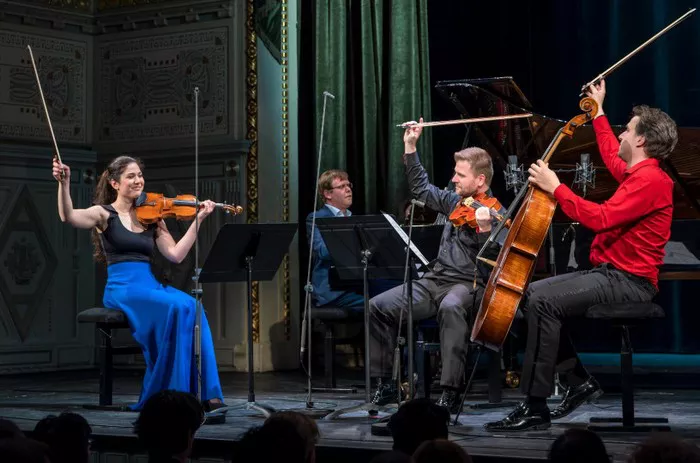Music, as an art form, is a constantly evolving medium that reflects the cultural, social, and technological changes of its time. Two major classifications within the vast spectrum of music are classical and contemporary music. Understanding the differences between these two genres not only provides insight into the evolution of music but also highlights the diverse ways in which music can be created and appreciated.
1. Historical Context
Classical Music
Classical music refers to the tradition of Western art music that dates back to the Medieval period, around the 9th century, and extends through the Renaissance, Baroque, Classical, Romantic, and Modern periods, up to the mid-20th century. Key composers from each era include Johann Sebastian Bach (Baroque), Wolfgang Amadeus Mozart (Classical), Ludwig van Beethoven (transitional figure from Classical to Romantic), and Igor Stravinsky (Modern).
Contemporary Music
Contemporary music encompasses a wide range of styles and genres that have emerged since the mid-20th century. It includes popular music genres such as rock, pop, hip-hop, electronic dance music (EDM), and indie, as well as more avant-garde and experimental forms. Key figures in contemporary music include The Beatles (rock), Madonna (pop), Kendrick Lamar (hip-hop), and Aphex Twin (electronic).
2. Musical Structure and Composition
Classical Music
Classical music is often characterized by its complex structures and forms. Key elements include:
Sonata Form: A three-part structure (exposition, development, recapitulation) commonly used in the first movements of sonatas, symphonies, and concertos.
Symphony: A large-scale work for orchestra, typically in four movements.
Concerto: A work for solo instrument(s) accompanied by an orchestra, usually in three movements.
Counterpoint: The art of combining different melodic lines in a musical composition.
Harmony and Tonality: Classical music often adheres to the rules of tonal harmony, with a clear sense of key and modulation.
Contemporary Music
Contemporary music, on the other hand, is marked by a greater diversity of structures and forms:
Verse-Chorus Form: Common in popular music, this form consists of verses and choruses, often with a bridge section.
Loop-Based Structure: Frequently used in electronic music, where short segments of music are repeated and varied.
Minimalism: A style characterized by repetitive patterns and gradual changes, often creating a hypnotic effect.
Atonality and Dissonance: Many contemporary works embrace atonality (lack of a key center) and dissonance (clashing harmonies) to create unique soundscapes.
3. Instrumentation
Classical Music
Classical music utilizes a wide range of acoustic instruments, including:
Strings: Violin, viola, cello, double bass.
Woodwinds: Flute, oboe, clarinet, bassoon.
Brass: Trumpet, horn, trombone, tuba.
Percussion: Timpani, snare drum, bass drum, cymbals.
Keyboard: Piano, harpsichord, organ.
Contemporary Music
Contemporary music often incorporates both traditional acoustic instruments and modern electronic instruments:
Electric Guitars: Widely used in rock, pop, and jazz.
Synthesizers and Drum Machines: Central to electronic music.
Digital Audio Workstations (DAWs): Software used for recording, editing, and producing music.
Sampling: The use of recorded sounds to create new compositions.
See Also: Baroque vs Classical Period of Music: What Are the Differences
4. Performance Practices
Classical Music
Performance in classical music is typically highly formalized and standardized:
Concert Halls: Classical music is often performed in concert halls with a focus on acoustics and audience etiquette.
Sheet Music: Performers generally adhere closely to the written score, with limited improvisation.
Conductors: Orchestral performances are usually directed by a conductor.
Contemporary Music
Performance practices in contemporary music are more varied and often less formal:
Live Venues: Performances can take place in a wide range of venues, from clubs and bars to stadiums and outdoor festivals.
Improvisation: Especially in genres like jazz and rock, improvisation plays a significant role.
Technology: Contemporary performances often involve extensive use of technology, such as lighting, visual effects, and sound amplification.
5. Audience and Cultural Impact
Classical Music
Classical music has historically been associated with the cultural elite and institutions like the church, aristocracy, and, later, the middle class. It often carries connotations of high culture and sophistication.
Contemporary Music
Contemporary music is more democratized and accessible, reflecting a wider range of social and cultural influences. It plays a significant role in popular culture and media, influencing fashion, language, and social movements.
6. Evolution and Innovation
Classical Music
While classical music is rooted in tradition, it has also been a platform for innovation. Composers like Beethoven and Stravinsky pushed the boundaries of musical form and expression, influencing the course of music history.
Contemporary Music
Contemporary music is marked by rapid innovation and the blending of genres. The advent of digital technology has transformed the way music is produced, distributed, and consumed, leading to new forms of creativity and expression.
7. Educational and Training Differences
Classical Music
Classical musicians often undergo rigorous formal training, including:
Music Conservatories: Institutions dedicated to the study of classical music.
Technical Mastery: Emphasis on technical proficiency and interpretative skills.
Historical Knowledge: Understanding the historical context and stylistic nuances of different periods.
Contemporary Music
Training in contemporary music can be more varied and informal:
Music Schools and Programs: Many contemporary musicians attend specialized schools or programs, but self-taught musicians are also common.
Diverse Skill Sets: Emphasis on creativity, songwriting, production skills, and familiarity with technology.
Collaborative Learning: Learning through collaboration with other musicians and practical experience.
See Also: Wolfgang Amadeus Mozart’s “Rondo alla Turca”
Conclusion
The differences between classical and contemporary music are profound, encompassing aspects such as historical context, musical structure, instrumentation, performance practices, audience engagement, and educational paths. While classical music is often seen as a reflection of historical traditions and formal structures, contemporary music embodies the spirit of innovation and cultural diversity. Both genres, however, share a common goal: to evoke emotion and connect with listeners in a meaningful way. Understanding these differences not only enriches our appreciation of music but also underscores the dynamic and evolving nature of this timeless art form.

